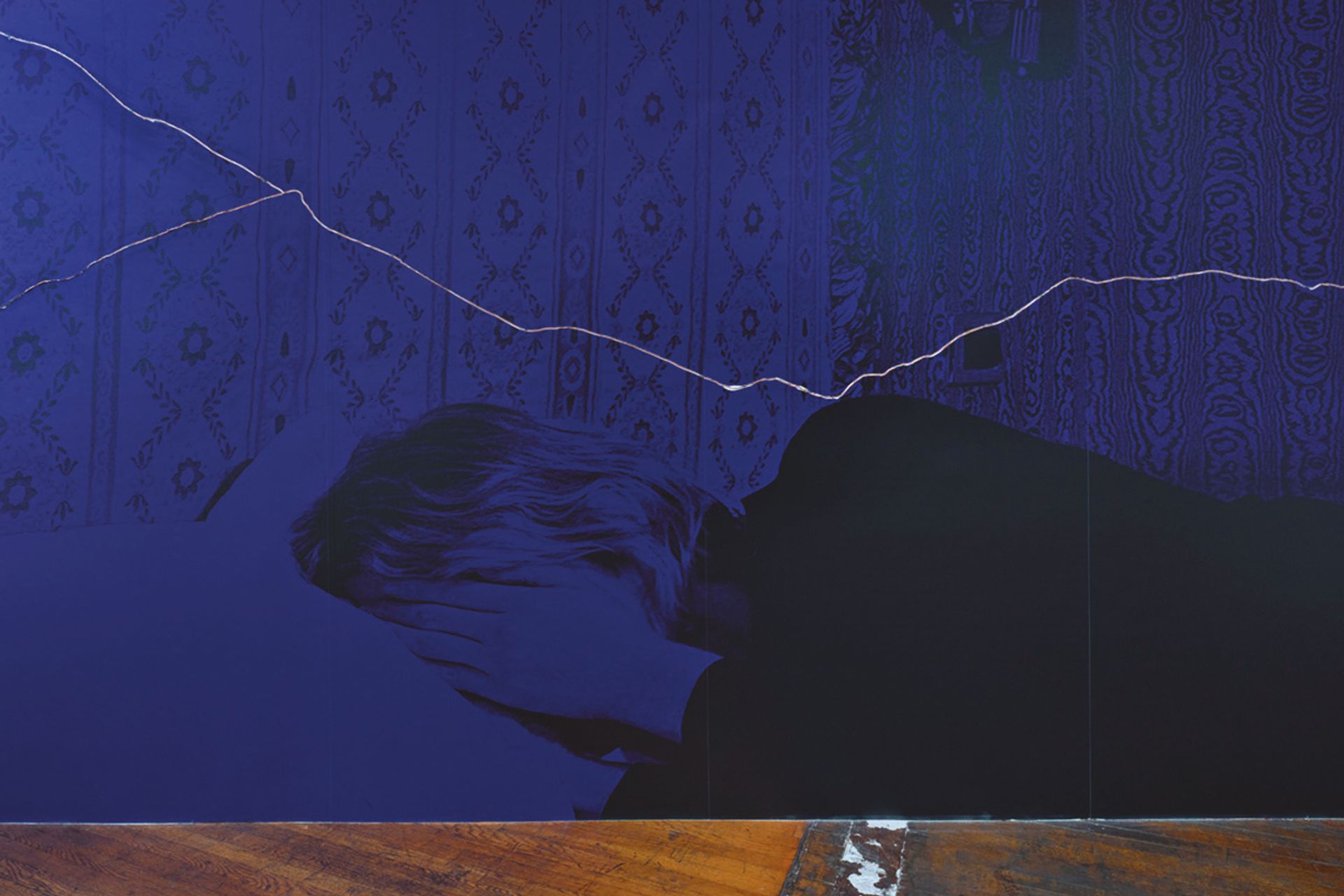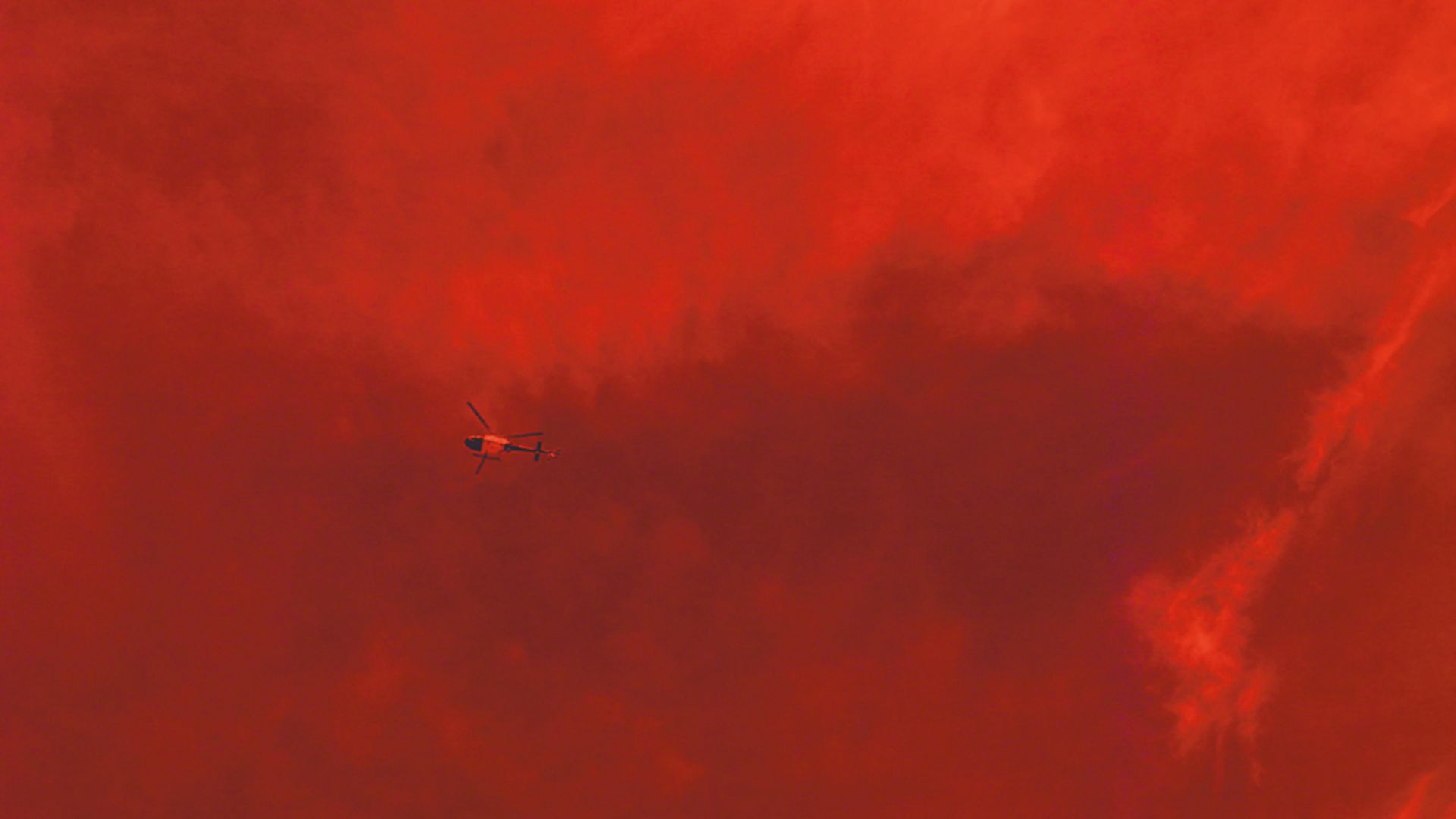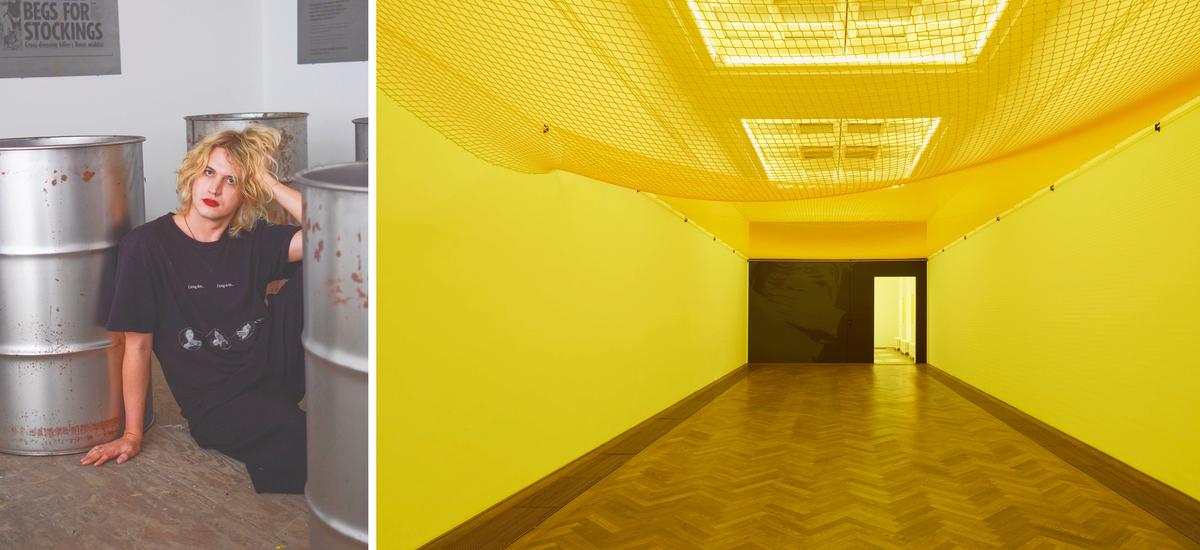Acid, poison and live electrical wires are all materials used in the—often literally—caustic work of P. Staff. The British-born, Los Angeles-based installation artist and film-maker came to wider attention for their 2019 solo show at London’s Serpentine Galleries, in which they engineered a piping system to leak corrosive liquid from the building’s ceiling. Nearby, metal works etched with acid detailed instances of the scaremongering ways the UK media reports on gender reassignment surgery, pointing to Staff’s enduring interest in how the laws and regulations governing our bodies intersect with queer and trans identities. The show’s titular film installation, On Venus, later appeared in the 2022 Venice Biennale.
For their biggest show to date, at the Kunsthalle Basel, Staff has made a series of unnerving interventions into the building’s architecture, replacing door handles and plug sockets with dried waste blood, and installing large electrified nets to delimit the space. In the final rooms, new film installations broach themes of slow horror, psychodrama, and the meeting point between violence and pleasure.

A detail of Staff’s À Travers Le Mal (2022), a work of printed vinyl embedded with electric wiring
Photo by Paul Salveson; courtesy P. Staf
The Art Newspaper: Electric nets and dried blood—you’ve not made the Kunsthalle a particularly inviting space. How dangerous was the installation and how much danger is the viewer in?
P. Staff: I like to use materials in which violence, abrasion or agitation are fundamental, because they reorient the choreography of the gallery, change how you navigate the space, and change how you understand your position, both corporeally and otherwise, to the work. With the dried waste blood, I collaborated with a designer, Basse Stittgen, who has invented a way of coagulating blood without any additives. It’s also my first time using electrified nets—set to a high voltage—although my 2022 show at the LA gallery Commonwealth and Council also featured live electrical wires embedded into a wall. Like my acid pieces, I work with a professional chemist and engineer, so while there is some danger involved, it is more about the theatre of danger. Although part of me doesn’t want to give that away. There should be some doubt.
So you don’t want the viewer to fully know if they will be harmed?
It’s about asking yourself—how close do I want to get to this work? How much do I want to put myself in the line of danger? It’s a question we ask ourselves all the time: when you see someone fall in the street, when you decide to go to a protest, when you assess how safe it is for you to walk home at night as a woman, or as a queer/trans person. The gallery allows for this questioning—a safe space to feel unsafe.

A still from the video that was part of Staff’s exhibition Prince of Homburg (2019), which examined queer and trans identity
Courtesy P. Staff
In your shows, these dangerous materials, such as acid and electricity, play central thematic roles, and, in this way, become protagonists too. Why?
I am interested in the space where violence tips into anarchic pleasure—the strange fine line between how good it can feel to destroy something, or yourself, and how necessary that destruction might be. The electric fences suggest carceral detainment. But they also represent our nervous systems, or the crackle of electricity that can be felt in the body during moments of danger and pleasure. For me, associating myself with dangerous, hazardous materials is about presenting a trans politics that doesn’t yield to the pressure of goodness. Trans people are so vilified in the UK, so there is a pressure to perform as the ideal subject, the well-behaved trans person. I find it much more interesting to focus instead on the layered complexities to the violence that we face.
Tell me about the films in your Kunsthalle Basel show.
One is a five-channel synced hologram fan piece showing a video poem. The show’s title In Ekstase comes from here. It bundles together lots of what comes up in my work—relationships to harm, the autonomy of the body, destroying oneself to remake oneself. The final room is a new film titled La Nuit américaine, which uses an old Hollywood technique to simulate night-time. Shot entirely in daylight, the content is quite banal—people going to work, cars driving around—but it is shot in this jarring, disorienting fake night. I was interested in thinking about the collapse of day into night, as a gesture towards a fracture of normative life as we know it. It ends up feeling like my version of a horror or zombie film, in which the sun feels like the most terrifying thing you’ve ever seen.
This is your first show of new works since Covid. How has the pandemic shifted interpretations of your work, so much of which is about disease and contamination, albeit more related to HIV/Aids.
On Venus wasn’t prescient of the pandemic, even though there’s literally footage of a wet market in it. But the contagious body horror it features came into focus through the pandemic. Reshowing it at the Venice Biennale, in the main exhibition The Milk of Dreams, was incredibly intimidating, as I wasn’t sure it would still stand up after a mass experience. I’m split as to whether it is productive or detrimental to compare Covid and HIV. In my work I’m deliberately promiscuous about the things I put into dialogue with each other—both materially and theoretically. There are specificities to the ongoing Aids crisis that can’t just be bowled over by Covid, but it is interesting to also consider these pandemics as crashing into each other.
Through your hazardous site-specific installations, you demand a lot from the institutions you work with. You also demand a lot from your audience—your Serpentine Galleries show in London featured videos of animal abuse that many viewers likely found upsetting. Why do you do this?
I’m often asking a question of tolerance. I don’t mean a moral or ethical tolerance, but more as though I am taking the hand of the institution, and of the viewer, and asking: how long can we stay in something uncomfortable together, and can we stick with it until we’ve reached some answer? It becomes a collective endeavour to stay with troubling, disconcerting facts that relate to who we all are.
• P. Staff: In Ekstase, Kunsthalle Basel, until 10 September


